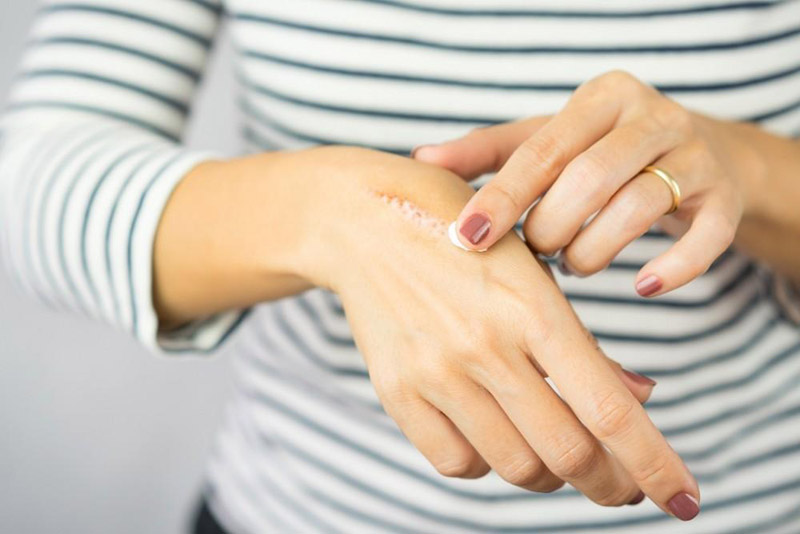Call Us
310-274-4401
Blog
Erase the Past With Biocorneum Scar Cream

You have a raised scar that still shows after attempts at treatment. It may be the result of an accident, a burn, or previous surgery. You are tired of people staring at the scar when talking to you. You cannot remember how many times you have explained how you got the scar.
Relief is at hand. Our expert, board-certified dermatologists at Rapaport Dermatology in Beverly Hills and Culver City, California, offer Biocorneum® advanced scar treatment by Sientra, which features FDA-cleared Silishield™ technology in a convenient gel formula.
Why Scars Form
No matter the type of wound, your skin goes through the same healing process. When the deep layer of your skin, called the dermis, is cut or wounded, your body starts producing new strands of collagen, a key protein in healthy skin.
Collagen and other nutrients rush to the site of the wound to rebuild the skin as quickly as possible. Sometimes your body produces too much collagen. It is thicker than your normal skin. The excess collagen causes the scar to rise above the level of your normal, undamaged skin.
Some people produce so much collagen that they develop a type of hypertrophic or keloid scar that can extend far beyond the original wound.
The skin on your scar may be sensitive or numb to the touch. It is less flexible than healthy skin and does not retain moisture as well. Makeup does not work well in covering it.
How Biocorneum Works
Sheets of silicone gel have been a standard treatment for raised scars for decades. Silicone sheets are the first-line treatment for scars because they help your skin retain moisture as it rebuilds itself, which makes your skin more flexible and healthier.
Removing silicone sheets for daily cleaning is inconvenient, though. And if you fail to clean them well, you might even end up with a skin infection.
Biocorneum cream uses the power of a silicone sheet and puts it in a convenient, easy-to-use gel form. It keeps your skin hydrated and advances normal skin healing by arresting excess collagen production.
Biocorneum has a unique FDA-cleared form of medical-grade silicone in gel form along with SPF 30 sunscreen to prevent your scar from darkening with sun exposure.
Biocorneum cream forms a breathable invisible shield on top of your scar. It is light, flexible, and moves like normal skin. Biocorneum is ideal to treat scars on:
- Large areas of skin
- Joints
- Face
- Neck
- Chest
- Hands
Apply your moisturizer, makeup, and more sunscreen when the gel is dry. The gel adheres to your skin for 12-24 hours. You apply Biocorneum twice a day for two months to treat new scars, or for three months if you have older scars.
Bicorneum Works on Old or New Scars
If you have tried to treat older scars without success, Biocorneum is the answer you have been looking for. It works on old scars as well as new ones.
Call Rapaport Dermatology for the most advanced treatment on the market today for troublesome scars.
